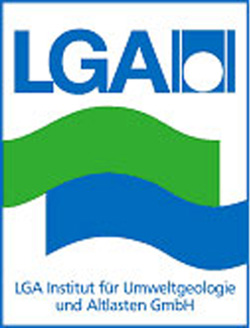Inspection of Fire Dampers
Almost all fire dampers produced up to 1988 contain components containing asbestos. In addition to the damper blade (product name including “Promatect”), the stop seals (product name “Litaflex”) in particular often contain asbestos. Depending on the year of construction and manufacturer, other asbestos components may also be present. All these components are to be classified as “weakly bound asbestos products” within the meaning of TRGS 519.
Asbestos-containing fire dampers are known from the following manufacturers, among other things:
CEAG, HELIOS, KUFLER, NORDLUFT, SCHAKO, STADLER, STRULIK, TROX, WILDEBOER
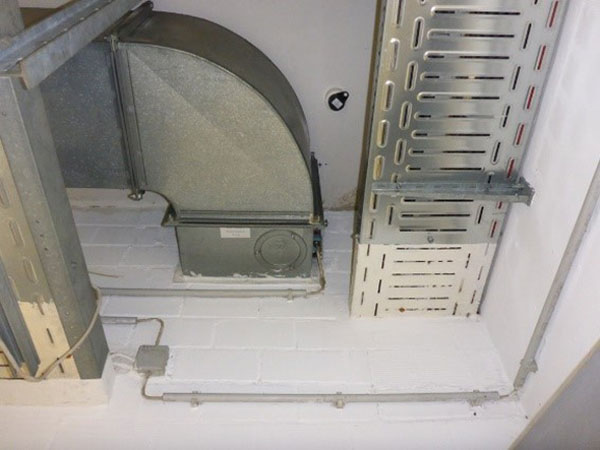
Typical mounting conditions of fire dampers
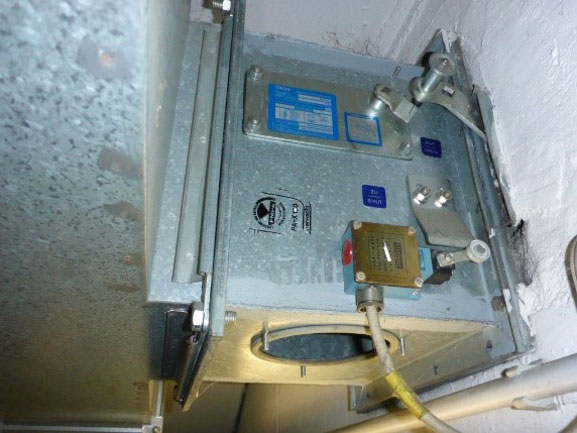
Typical mounting conditions of fire dampers
Overview of the most important dates:
- at the latest until 30 September 1984 (depending on the manufacturer), TROX until June 1981:
asbestos-containing damper blades, stop gaskets and other construction elements - until 31 July 1988 (TROX, SCHAKO), until mid August 1988 (WILDEBOER):
asbestos-containing stop gaskets (“Litaflex”) and sporadically fiber cement - at the latest from the beginning of 1989 (for all manufacturers): asbestos-free
The legal requirement for expert assessment of the need for remediation of existing buildings due to building materials containing asbestos was previously based on the 1989 version of the Asbestos Guideline (“Guidelines for the assessment and remediation of weakly bound asbestos products in buildings”), according to which asbestos-containing fire dampers (without individual inspection and without a direct need for remediation) were classified in urgency level III (“reassessment required in the long term”, i.e. after 5 years at the latest).
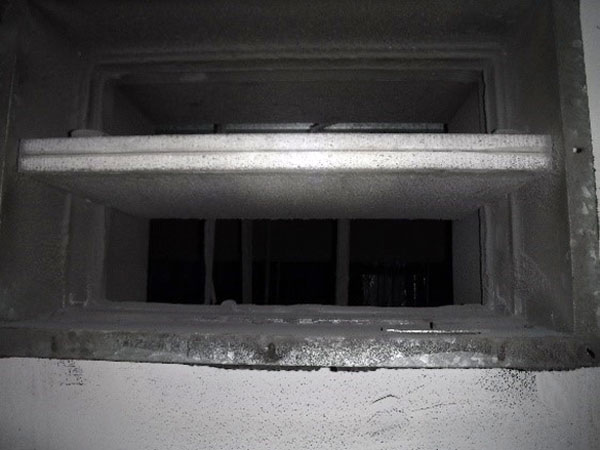
Old fire damper with flap and gasket containing asbestos
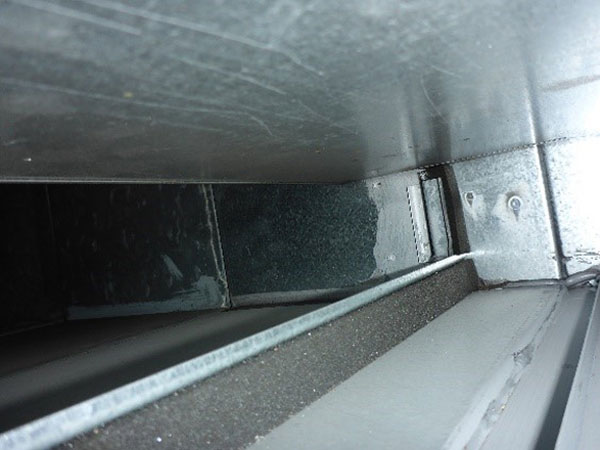
New fire damper with asbestos-free seal
According to MVV TB, fire dampers containing asbestos must not pose a potential risk to the health of users. In addition, it must be possible to safely rule out any risk to users in recreation rooms.
As asbestos-containing fire dampers show increasing signs of ageing, the MVV TB also provides information on the end of their service life.
The “LV 45 Guidelines on the Hazardous Substances Ordinance” issued by the State Committee for Occupational Health and Safety (LASI) in October 2018 specify special requirements, in particular for inspection/maintenance work, based on new knowledge about the fiber release potential of asbestos-containing fire dampers.
For maintenance work on asbestos-containing fire dampers, a duty of expert knowledge and notification applies. In addition, protective measures in accordance with the Hazardous Substances Ordinance (GefStoffV) are prescribed for asbestos exposure (multi-chamber airlocks with negative pressure, etc.) as well as clearance measurements for neighboring rooms.
The current legal requirements significantly increase the overall effort required for the operation and maintenance (functional testing) of asbestos-containing fire dampers.
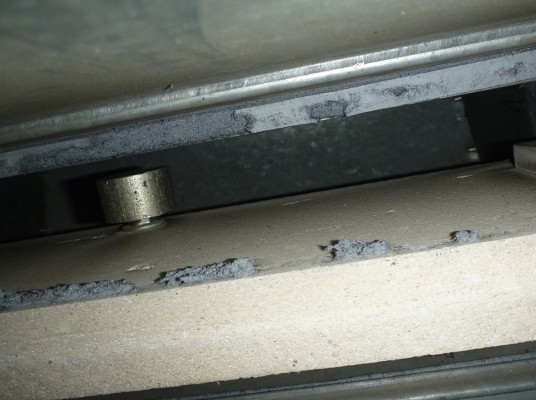
Severe damaged gasket (“Litaflex)” containing asbestos with adhesions on the flap
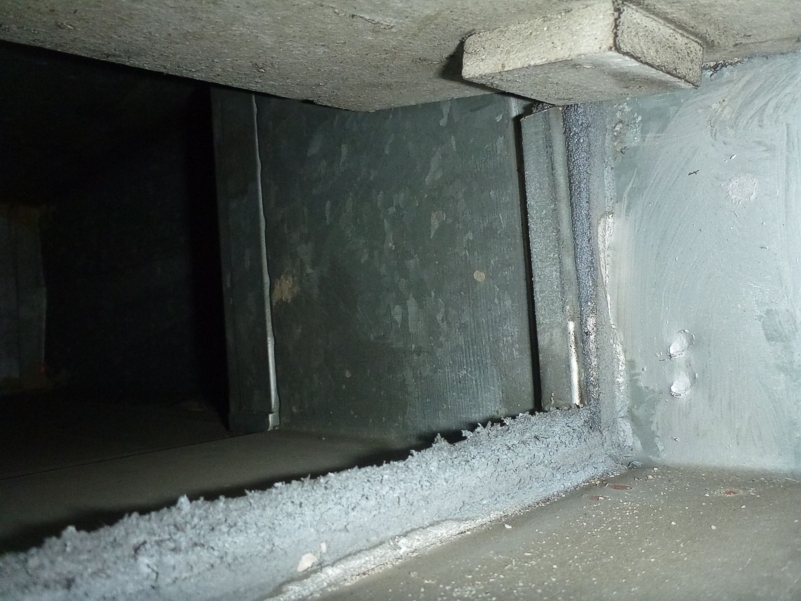
Heavily damaged asbestos-containing stop gaskets (“Litaflex”)
The state of the art today is an individual assessment of the fire dampers with regard to their condition by an asbestos expert and the classification of the fire dampers into damage categories depending on the assumed risk of fiber release.
This is currently carried out in accordance with the “Recommendations for handling fire dampers containing asbestos” published in March 2021 by the Gesamtverband Schadstoffsanierung (GVSS). As it is often not possible to replace all of a building’s asbestos dampers at the same time for organizational and financial reasons, the asbestos expert can use “prioritization” to make recommendations on the order of demolition or refurbishment. This also serves as a basis for coordination between the building owner, building authorities and fire protection experts.
Based on the GVSS publication, a VDI guideline committee – with the participation of the LGA (Ms. Weiblen, Mr. Malkmus and Dr. Kisskalt) – is currently working on the VDI guideline “Fire dampers containing asbestos” (VDI 6202 Sheet 3.1). This is intended to provide all building owners with a technical basis for dealing with fire dampers containing asbestos. The draft of the guideline is to be published as a green print in spring 2024 (probably in April).
Our services to you include:
- Expert assessment of fire dampers with analysis for evidence of asbestos
- Assessment of the current condition and grading into damage categories / priority levels according to the GVSS recommendations for action
- Technical investigation in the surrounding area of the fire dampers (collection and analysis of material samples)
- Contaminant register
- Renovation and disposal concepts
- Occupational safety concepts
- Bidding documents
- Project management, remediation and dismantling supervision
The General Association of Hazardous Material Remediation (Gesamtverband Schadstoffsanierung, GVSS) has certified us as “Remediation experts for surveying and planning” for the remediation of buildings and plants impacted with contaminants.
Moreover the LGA-IUA is qualified as “Examination Center for Contaminated Building Materials and Construction Waste” to perform external quality controls and take on tasks as head technical expert.
The German Demolition Association (Deutscher Abbruchverband, DA) has officially recognized Dr. Kisskalt as an “expert advisor” for the categories “general demolition”, “hazardous building materials” and “waste management”.

Bernd Malkmus
Diplom Geologist
Phone: +49 911 12076 112
Telefax: +49 911 12076 110
Mobile: +49 151 16 76 50 43
Bernd.Malkmus@LGA-geo.de

Carmen Weiblen
Diplom Geographer
Phone: +49 911 12076 115
Telefax: +49 911 12076 110
Mobile: +49 160 53 72 365
Carmen.Weiblen@LGA-geo.de
LGA Institut für Umweltgeologie und Altlasten GmbH
Christian-Hessel-Str. 1
D-90427 Nürnberg
Phone: +49 911 12076 100
Telefax: +49 911 12076 110
info@LGA-geo.de
bewerbung@LGA-geo.de
News

Expertise according to DGUV 312-906
“Every year again...” - The expert inspection and...

Recognition as a body for radon measurements in workplaces
Recognition as a body for radon measurements in workplaces...

Experts for safety structures against alpine natural hazards
Experts for safety structures against alpine natural...

Membership in the RAL Quality Association
Membership in the RAL Quality Association...

Impulse Online Edition
LGA Impulse - Online Edition With the current summer...
Older articles
